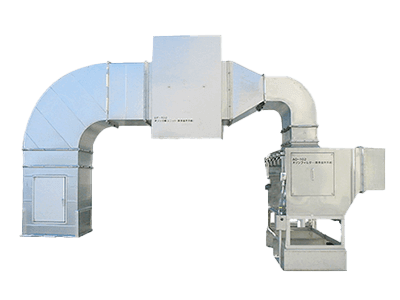What Is Deodorizing Equipment?

Deodorizing equipment refers to devices designed to neutralize or eliminate unpleasant odors in various settings, ranging from homes and offices to factories and waste disposal sites. Common methods include the use of photocatalysts, ion generators, and specialized systems for handling intense odors from specific substances.
Applications of Deodorization Equipment
These systems are crucial for maintaining air quality, ensuring work safety, and adhering to emission standards in environments dealing with organic solvents, food processing, sewage, and waste treatment.
Principle of Deodorization Equipment
Deodorization can be achieved through decomposition, adsorption, and aromatic methods, each suitable for different levels of odor intensity and operational requirements.
Types of Deodorization Equipment
- Combustion Method: Utilizes high temperatures to oxidize and decompose odor-causing substances.
- Cleaning Method: Involves gas-liquid contact with a cleaning solution for neutralization and decomposition.
- Adsorption Method: Employs materials like activated carbon to adsorb odors.
- Ion Oxidation Method: Generates oxygen clusters via electric discharge to decompose odors.
- Photocatalytic Method: Uses ultraviolet light-activated photocatalysts for oxidative decomposition.
- Ozone Oxidation Method: Brings odorous substances into contact with ozone for decomposition.
- Dilution Method: Dilutes odors with air and ventilates them out.
- Biological Deodorization Method: Utilizes microorganisms for natural decomposition.
- Plasma Decomposition Method: Uses high-voltage plasma-generated active oxygen plasma for decomposition.
- Chemical Capture Method: Spray a compound solution onto odors for neutralization.
How to Select Deodorization Equipment
To obtain deodorizing effects, it is necessary to accurately grasp the type and nature of the odor and select a deodorization system.
1. Combustion Method
This method can deodorize highly concentrated odors but is expensive in terms of construction and maintenance.
2. Cleaning Method
Effective when substances are specified. Requires large equipment and deodorizer costs.
3. Adsorption Method
Simple equipment, not suitable for high humidity or high-temperature odors.
4. Ion Oxidation Method
Cannot deodorize highly concentrated odors, but is highly safe.
5. Photocatalytic Method
Requires periodic cleaning to restore catalytic function.
6. Ozone Oxidation Method
Compact, but ozone inhalation is harmful.
7. Dilution Method
Effective for all odors at low concentrations.
8. Biological Deodorization Method
Difficult to control conditions, but gentle to nature.
9. Plasma Decomposition Method
Stable, although there are few examples of installation.
10. Chemical Capture Method
Deodorizers can be custom-made except for types that cannot be used.